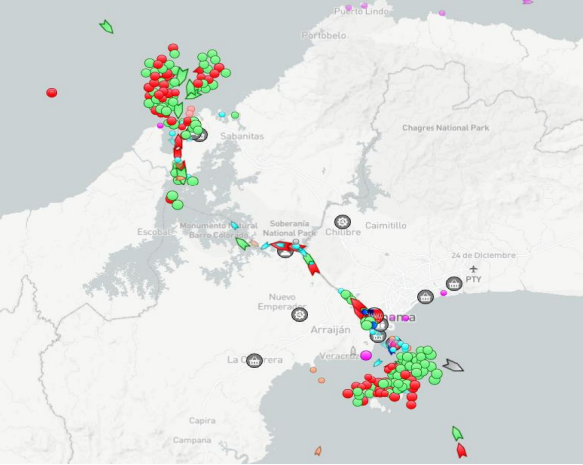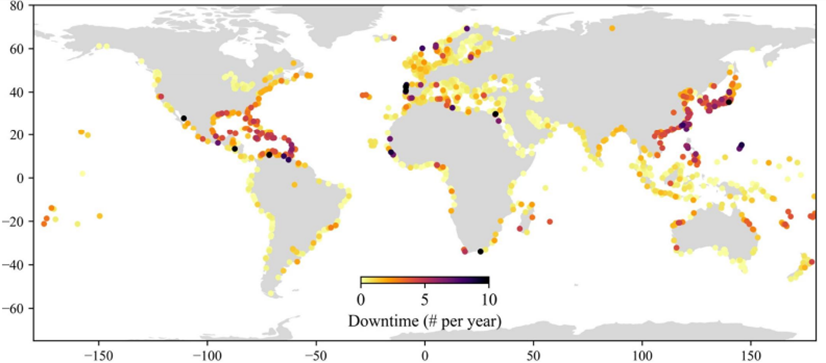Weathering the Storm: Climate Resilience in Supply Chains
Supply chains, the intricate networks that connect businesses and consumers worldwide, have become increasingly vital to modern economies. They ensure the smooth flow of goods and services, underpinning our daily lives. In recent decades, supply chains have evolved into sophisticated systems, a marvel of human ingenuity and cooperation. However, this complex interconnectedness also makes them vulnerable to a growing threat: climate change.
Supply Chains and Climate Change
Supply chains are a major contributor to climate change due to their reliance on fossil fuels for transportation, energy consumption, and manufacturing processes. According to the Carbon Disclosure Project (CDP), of the 18,600 companies that disclosed their carbon emission data through the CDP in 2022, scope 3 emissions (often referred to as supply chain emissions) are, on average, 11.4 times greater than scope 1 and 2 emissions (often referred to as operational emissions) [1]. Additionally, the production and consumption of goods and services within supply chains contribute to emissions through energy use, deforestation, and waste generation.
Not only are supply chains significant contributors to climate change through greenhouse gas emissions, but they are also increasingly impacted by its adverse effects. A study from the University of Oxford estimates that climate change is already jeopardizing global trade and economic activity, putting a staggering US$81 billion of trade and US$122 billion of economic activity at risk annually. Climate-related events such as extreme weather, rising sea levels, and natural disasters pose significant risks to supply chain operations. For example, the summer of 2022 brought low water levels to the Rhine River, causing severe delays to shipping arrivals and departures. Some vessels were forced to sail with cargoes at just 25% of capacity as Europe endured its worst drought in 500 years [3].
Mitigation and building resilience
To mitigate climate change and enhance supply chain resilience, organizations must take proactive steps. One crucial strategy is to reduce greenhouse gas emissions throughout the supply chain. This can be achieved by transitioning to renewable energy sources, improving energy efficiency, and adopting sustainable practices. Additionally, organizations can support suppliers who are also committed to reducing their environmental impact.

Building resilience against climate-related supply chain risks is equally important. Supply chains must become more diversified, collaborative, and adaptable. Long-term planning and risk-based management are essential to proactively address climate-related challenges. This can be achieved using the following strategies:
- Avoiding over-reliance on single regions or suppliers.
- Sharing data across the supply chain to enable better monitoring, prediction, and collective action in response to extreme weather patterns.
- Investing in early warning systems to allow for timely responses and mitigation efforts.
- Identefying vulnerable points in supply chains and specific risks posed by climate change such as vulnerable waterways and ports, endangered transportation infrastructure, unprotected manufacturing and production facilities, and agricultural production threatened by droughts and extreme weather.

In conclusion, climate change poses a significant threat to global supply chains. By understanding the risks and taking proactive measures, organizations can mitigate their own environmental impact and build resilience to climate-related disruptions. Supply chain companies and industries heavily reliant on supply chains should be at the forefront of efforts to reduce their carbon footprint. Like a smoker who realizes the negative impact of their habit on themselves and others, supply chain organizations should prioritize carbon reduction. This not only safeguards their own operations but also helps create a more sustainable and resilient global economy.
References
[1] "Scoping Out: Tracking Nature Across the Supply Chain," CDP, 2023.
[2] . J. Verschuur, E. E. Koks and J. W. Hall, "Systemic risks from climate-related disruptions at ports," Nature Climate Change, vol. 13, no. 8, p. 804–806, 2023.
[3] E. Thomson, "Droughts are creating new supply chain problems. This is what you need to know," World Economic Forum, 25 October 2023. [Online]. Available: https://www.weforum.org/agenda/2023/10/drought-trade-riverssupply-chain/. [Accessed 25 September 2024.
[4] P. R. Atack, "Panama Canal Authority blames queues on drought and draft cut," Ship-Technology.com , 11 August 2023. [Online]. Available: https://www.ship-technology.com/news/panama-canal-authority-blames-queuesdrought-draft-cut/. [Accessed 25 September 2024].
[5] L. Woetzel, D. Pinner, H. Samandari, H. Engel, M. Krishnan, C. Kampel and J. Graabak, "Could climate become the weak link in your supply chain?" McKinsey Global Institute, 6 August 2020. [Online]. Available: https://www.mckinsey.com/capabilities/sustainability/our-insights/could-climate-become-the-weak-link-in-yoursupply-chain. [Accessed 25 September 2024].
[6] "Climate-Related Supply Chain Risk: Are You Prepared? - FTI Strategic Communications," FTI Consulting, 15 December 2022. [Online]. Available: https://fticommunications.com/climate-related-supply-chain-risk-are-youprepared/. [Accessed 25 September 2024].



